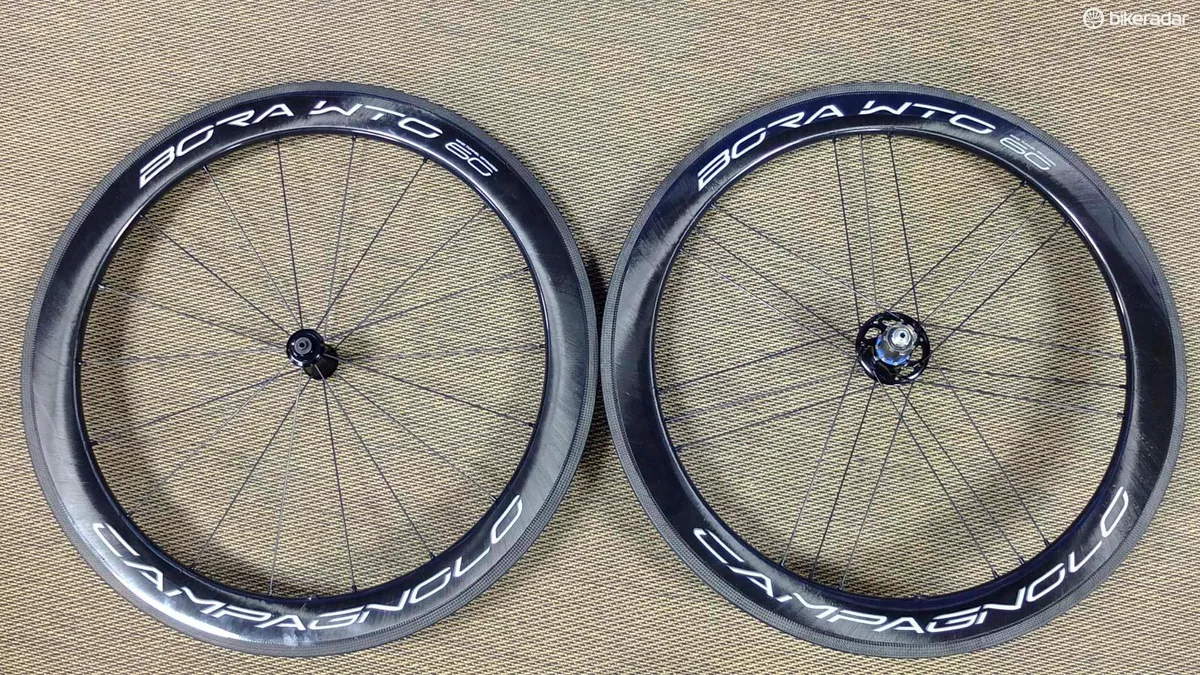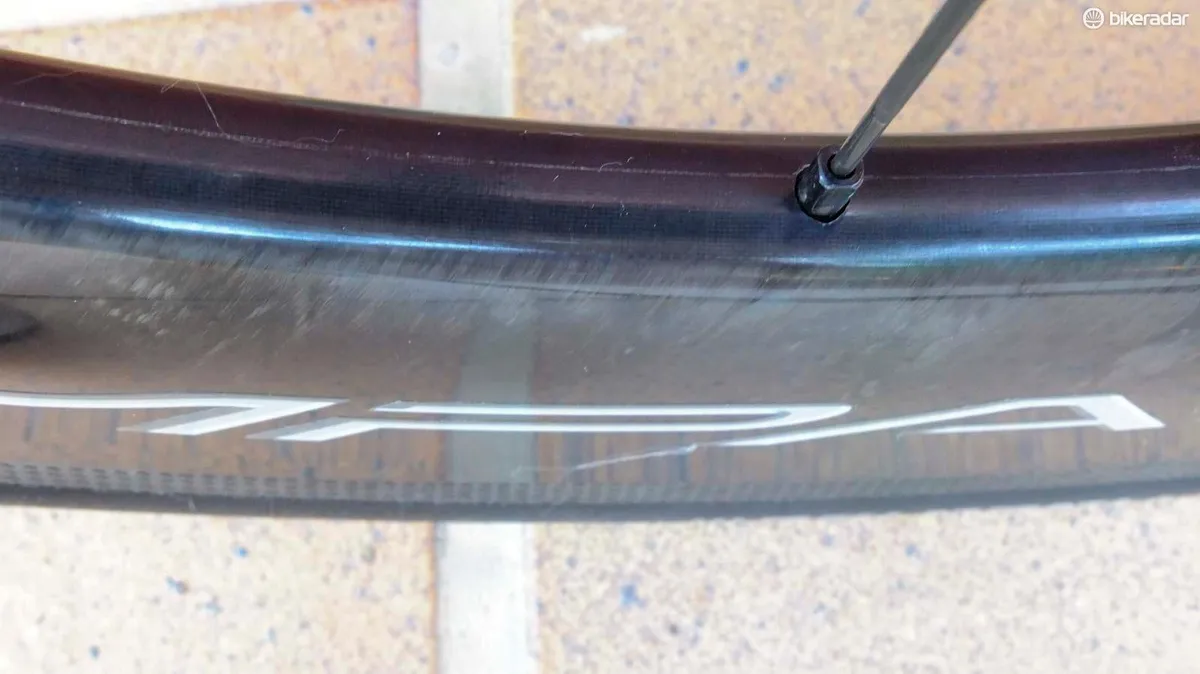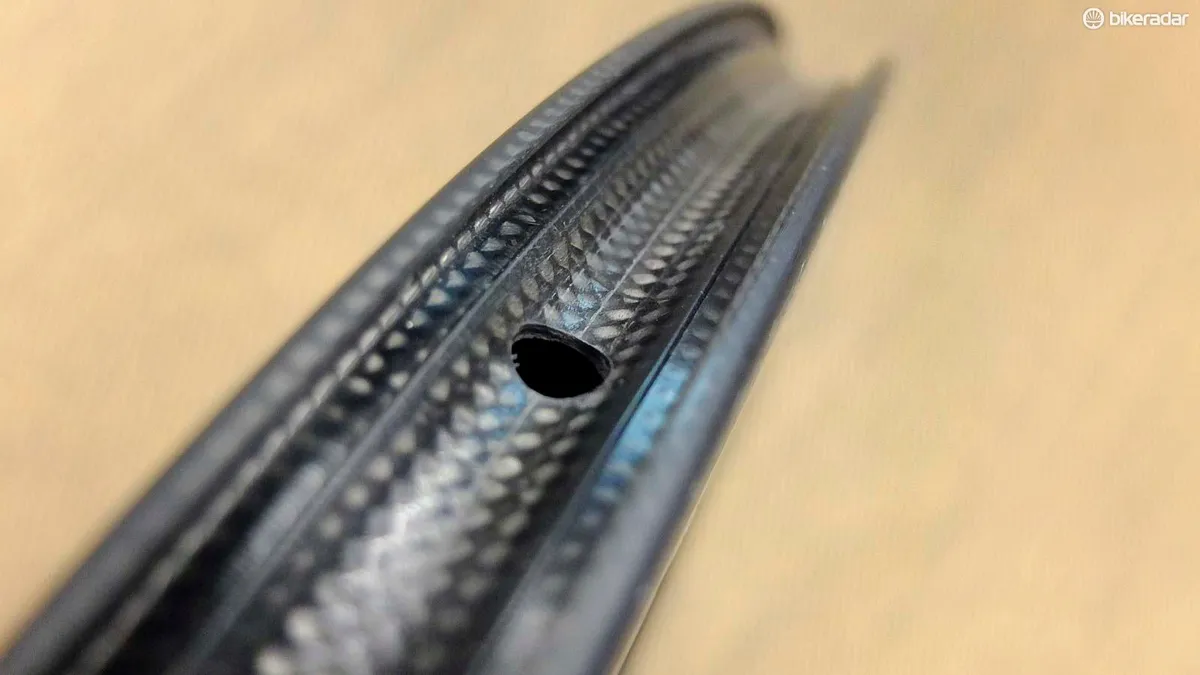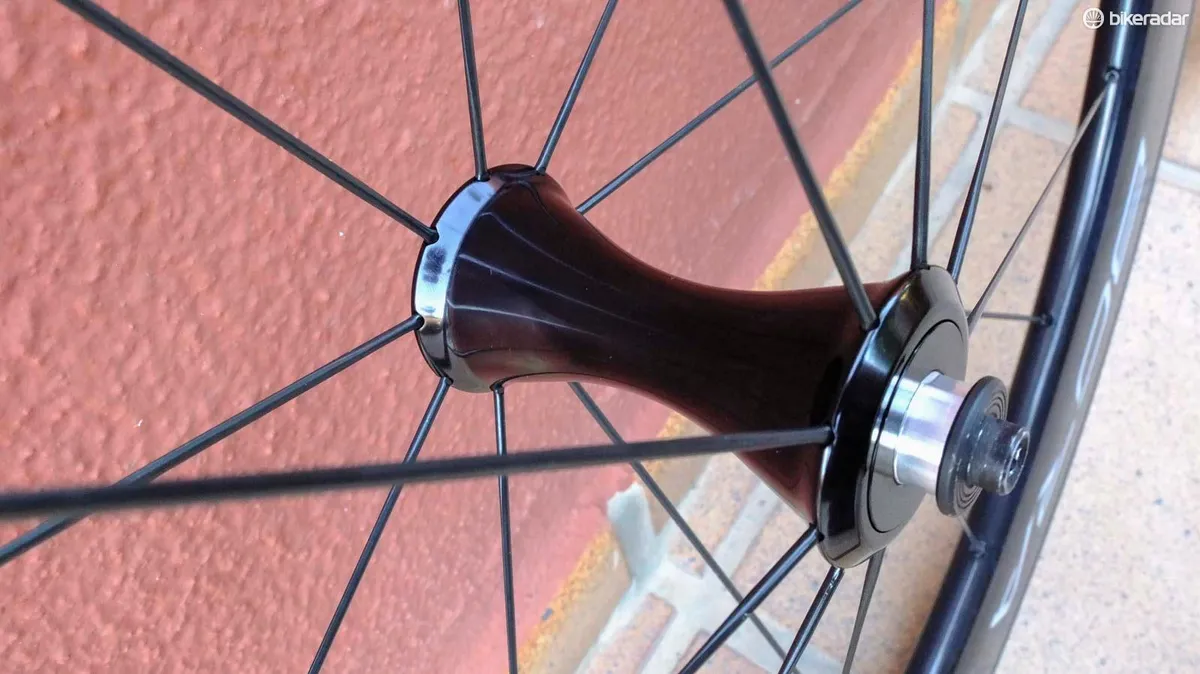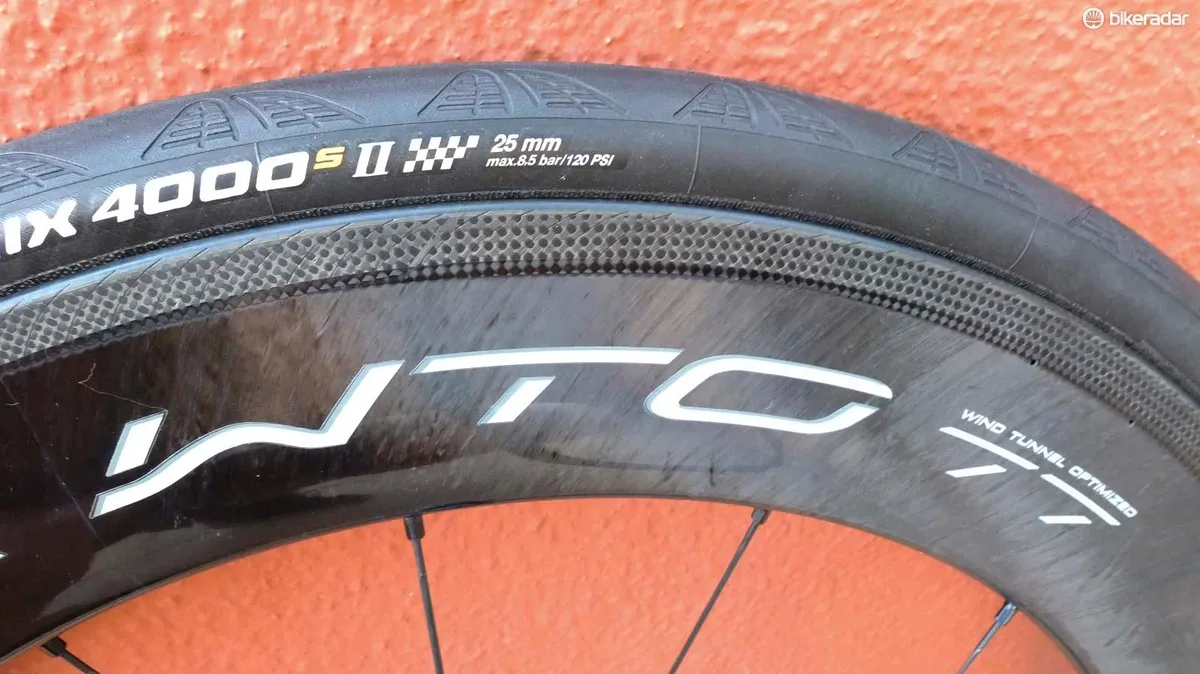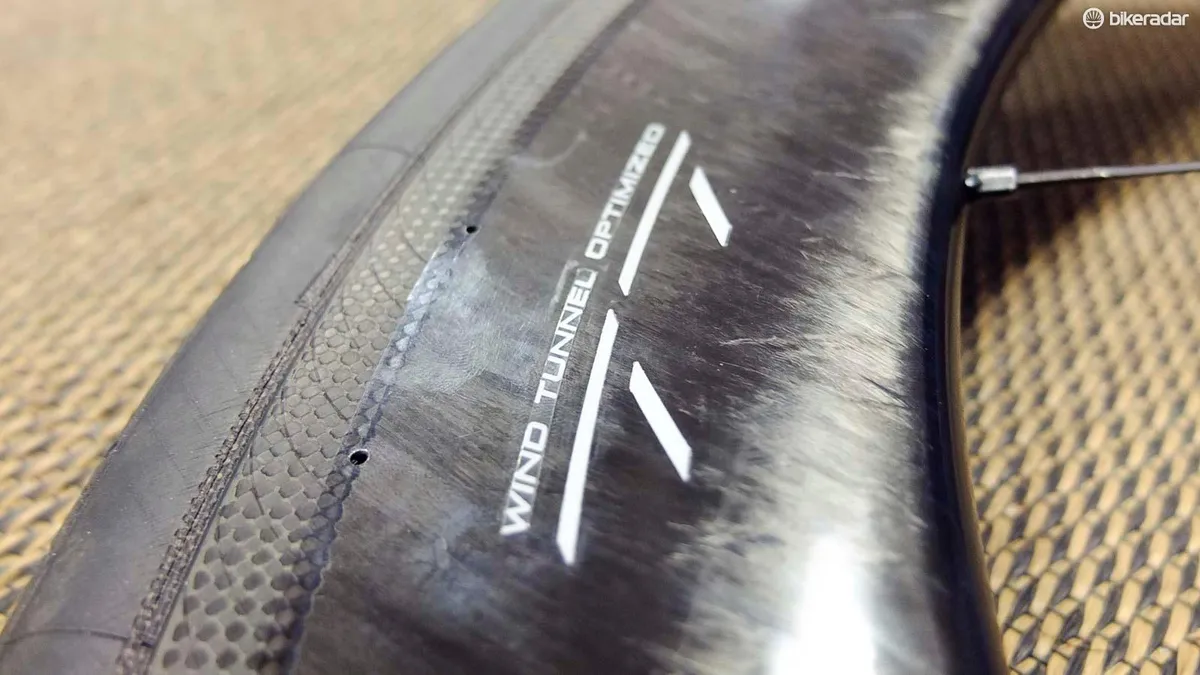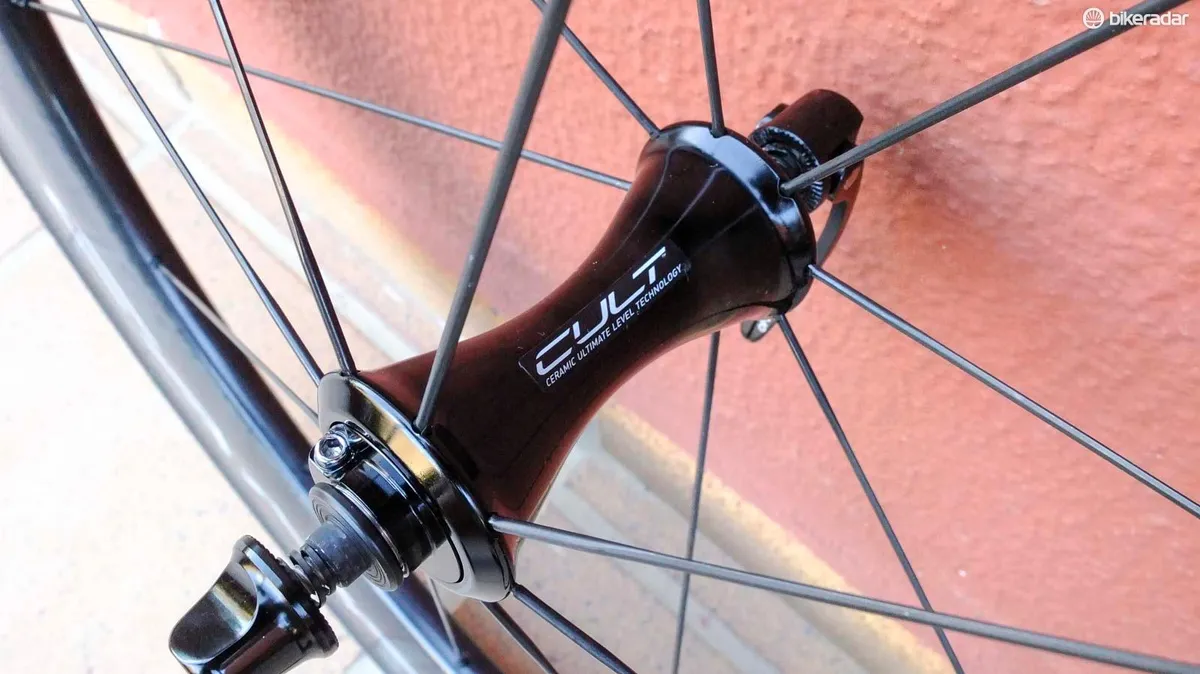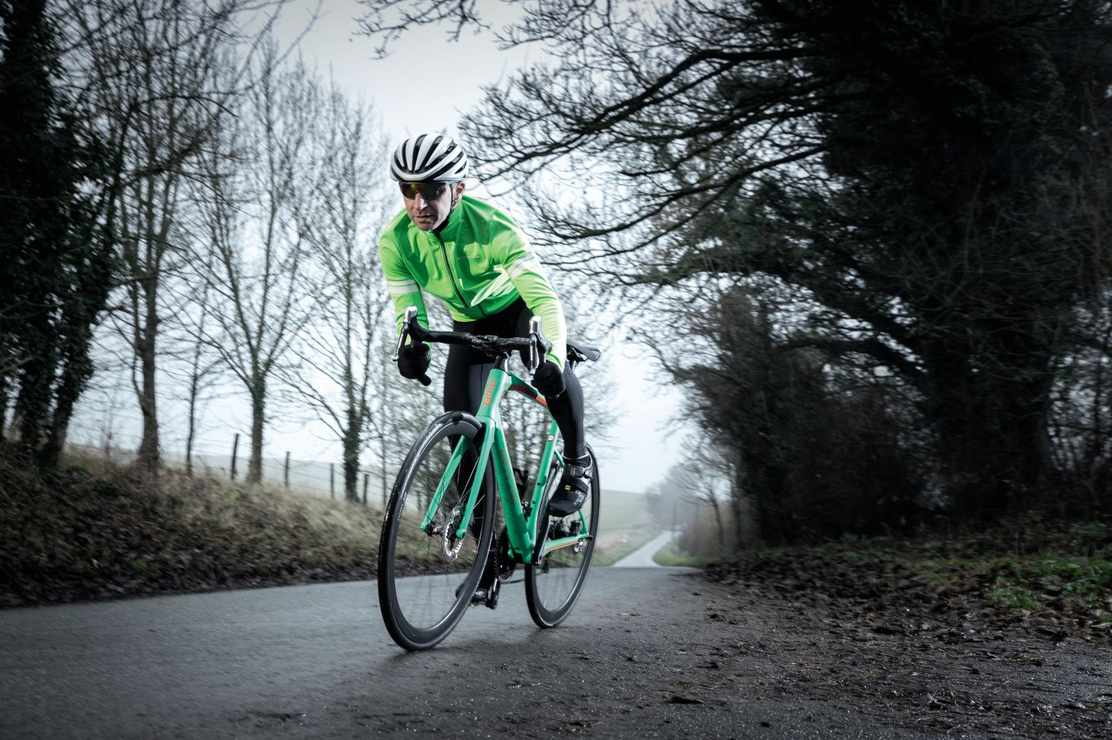In conjunction with its 12-speed launch, Campagnolo is also rolling out new Bora wheels and an updated version of its app, MyCampy 2.0.
The Bora wheel has evolved a number of times over the years. The latest models are the Bora 60 WTO and Bora 77 WTO, with the abbreviation standing for Wind Tunnel Optimized. As with almost all new wheels the aim was to improve efficiency by reducing drag.
The new Boras are the result of Campy’s largest ever aero project, which included CFD and FEM analysis, aero paper research and testing in the real world and wind tunnel.
Lab testing replicated six months' of use in two and a half weeks, and included use in salty, sandy and extremely hot conditions, plus cobble stones and so on.
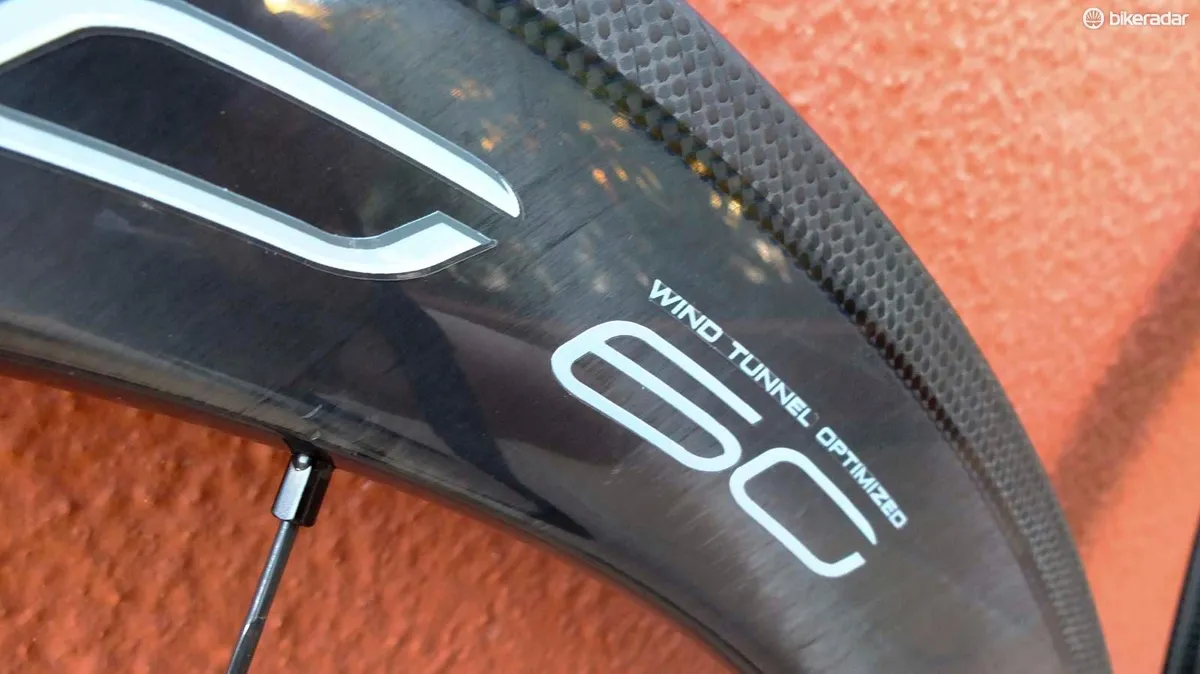
The end result? Campagnolo claims its two new rim profiles are the most efficient drag-reducing shapes on the market.
Besides rim shape, the WTO project also looked at hubs and spokes. Hubs that are slim in the centre and curve upwards to taller flanges proved the most aerodynamic, Campagnolo claims, but were very complicated to build from carbon, so aluminium was used.
The new 3D aero spokes have a diamond profile, with internal nipple support tabs to spread the load within the rim.
Interestingly, Campy claims external nipples are the most aerodynamically efficient system if it’s not possible to eliminate the gap around the spoke on internal-nipple designs.
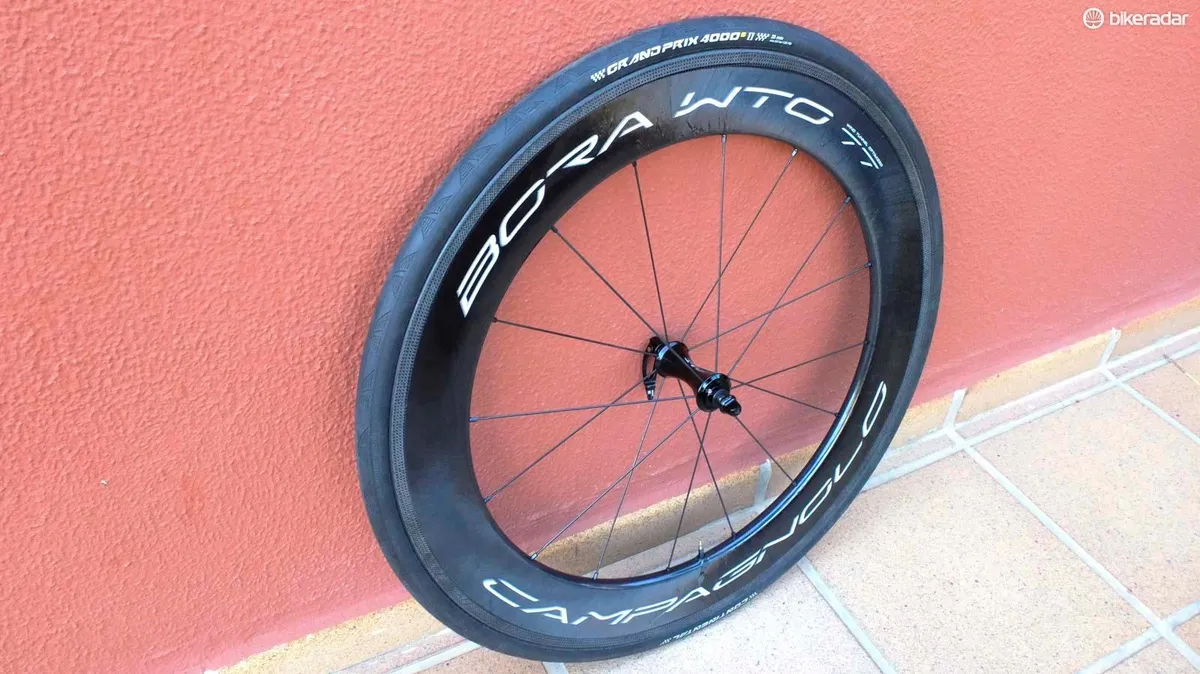
The rim profile has parallel sides that narrow slightly before a blunt-nosed internal curve. For braking, Campy’s AC3 textured track is used, which is an improvement on the company's 3Diamant’s resin-free carbon track.
All testing of the 19mm internal-width rims was done on 25mm and 28mm tyres. Campy tested a number of tyres. Tubulars were fast, producing 30 watts of rolling resistance. Clinchers fared slightly better, with 28 watts. But Schwalbe’s tubeless One Pro were the best, with 25 watts of rolling resistance at 45kmh for an 87kg rider.
The new wheels have carbon 2-Way-Fit rims with undrilled rim beds, and will be supplied with tubeless valves.
The Bora 60 WTO come as a pair, weighing a claimed 670g front and 880g rear, coming out to 1,550g for the pair. They have USB ceramic bearings and bearing preload adjustment.
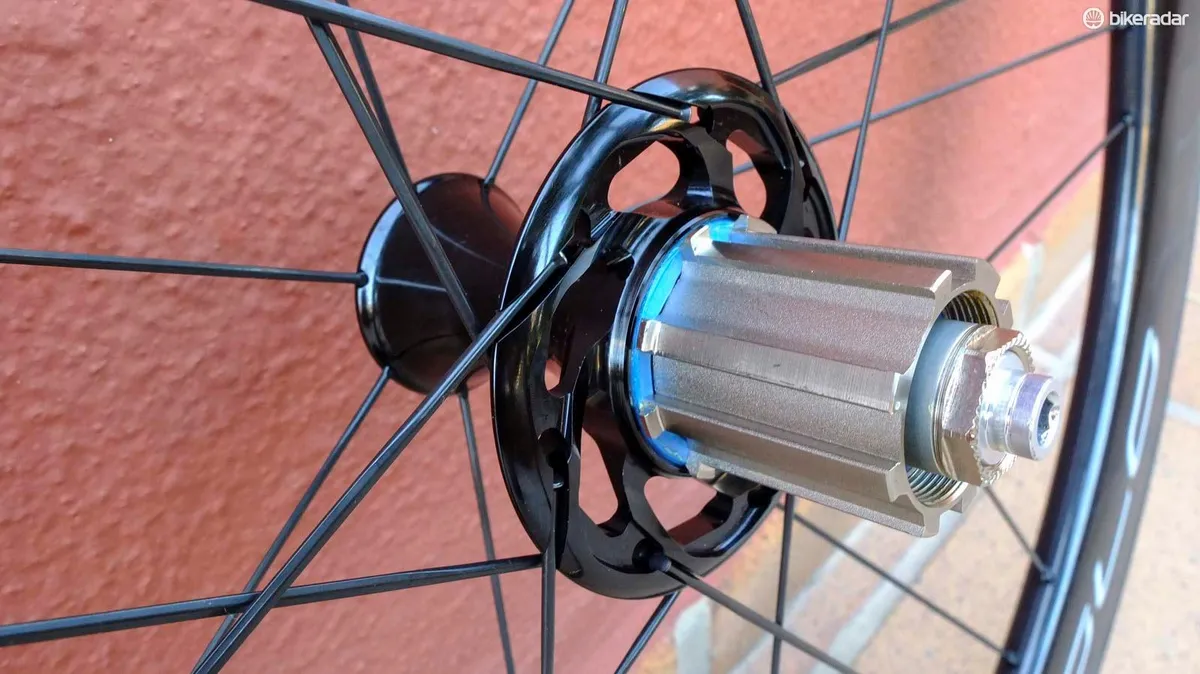
The Bora 77 WTO front wheel weighs a claimed 745g with CULT ceramic bearings. Some professional riders at the recent Tirreno-Adriatico stage race used the new Bora 77 WTO for the time trial, labelled as the current Bora 80, presumably matched to a tubular-shod disc wheel.
There are no disc brake versions yet or shallower rim profiles, but although we have no confirmation of either, both are quite likely based on the data collected for this project and current trends.
Availability is to be confirmed, but could be as early as May.
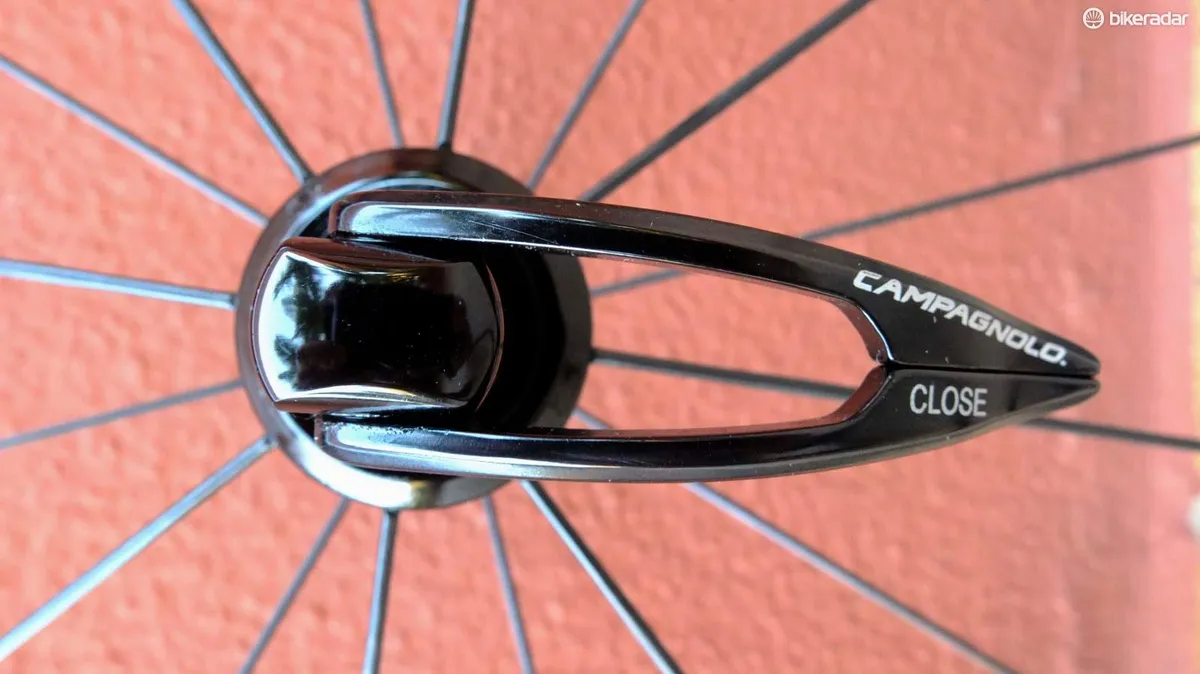
MyCampy 2.0
Campagnolo's updated app offers functionality for riders with any components, but Campy owners, and EPS owners in particular, stand to gain far more benefits.
MyGarage is where each of your bikes and their components are listed and catalogued. As you update your riding and usage logs, it shows notifications for every component, including maintenance advice, all subdivided and optimised, with clear graphic icons for easier user interaction. It also now includes disc brake and 12-speed options.
MyEPS contains a dashboard for control, status and updates of EPS drivetrains. It allows you to update firmware, diagnose faults and even change your shifting preferences and speed from a smartphone.
MySessions is a personalised database, which can record ride sessions logged with a computer or smartphone or you can manually insert them. It then allocates the distance ridden to your bike’s specific components, based on the MyGarage function.
You can review the data in many ways, and filter the bike’s performance from your phone, even viewing the ride via particular gear ratios and distance and time within each one against a profile of the ride. This can be done with a view to improving your efficiency, referencing it against personal performance data, and even refining drivetrain and ratio selections.
It can be synced to Garmin Connect at the moment, and possibly Strava in the future.
The app is available for Android or iOS.
The website version online offers even greater information than the app can show, including every MyGarage bike shown on screen in one go. The graphs and specific gear analysis (EPS only) contain far more detail too.
